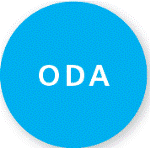Redefining aid: Is it good, bad or ugly?
Published on Tue, 2015-02-24 09:59
The concept of Total Official Support for Sustainable Development (TOSD) is being promoted as an alternative to the current Official Development Assistance (ODA). Is this going to put more money on the table or just a “creative accounting” way to meet the commitments made by developed countries without paying? Is the concept of Total Official Support for Sustainable Development TOSD) good news? There is a lively debate about the role of ODA in light of the universal and transformational nature of the Sustainable Development Goals and of the current debate within the OECD/DAC. Any debate on improving quantity and quality of ODA could bring good news, provided that it addresses these legitimate concerns:
Read more: Scoping the new measure of Total Official Support for Sustainable Development (TOSD) More on the Definition of ODA: Proper Credit for Credits By Marina Ponti, Social Watch » |
SUSCRIBE TO OUR NEWSLETTER



